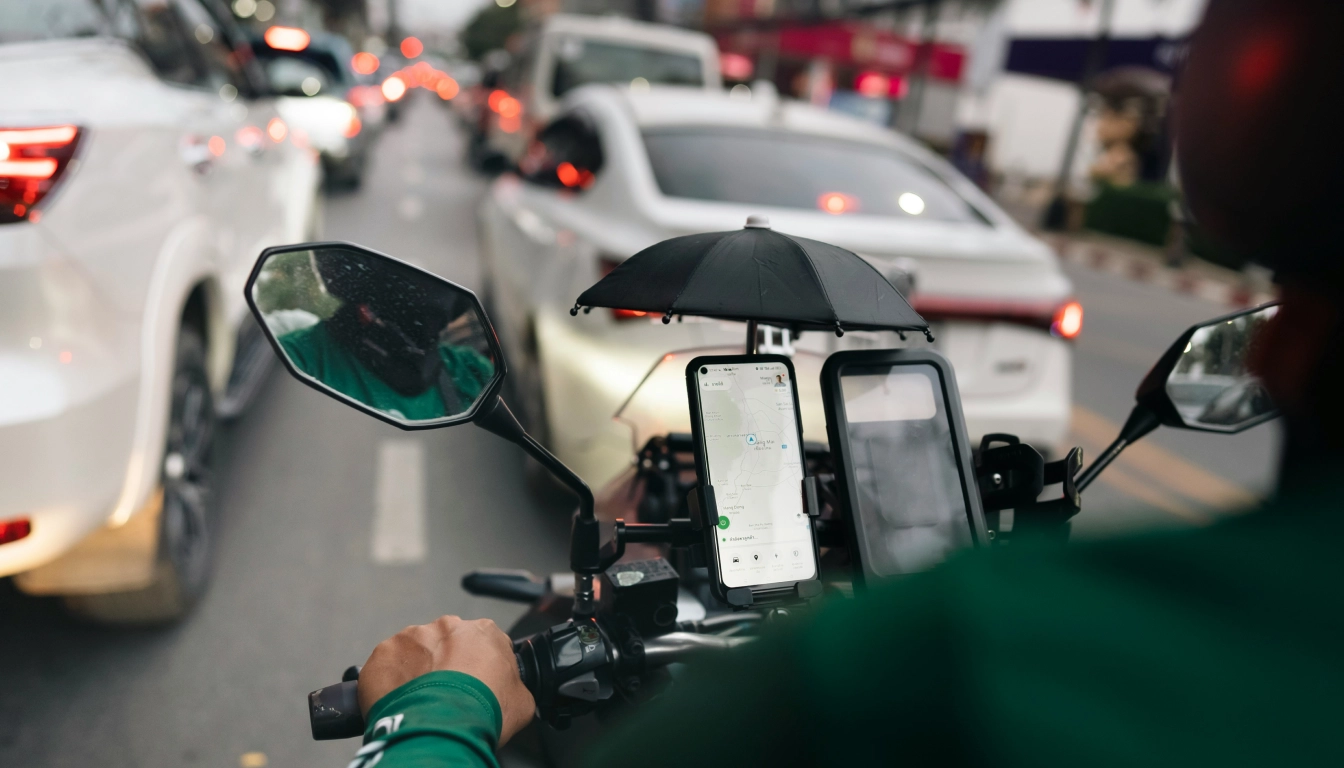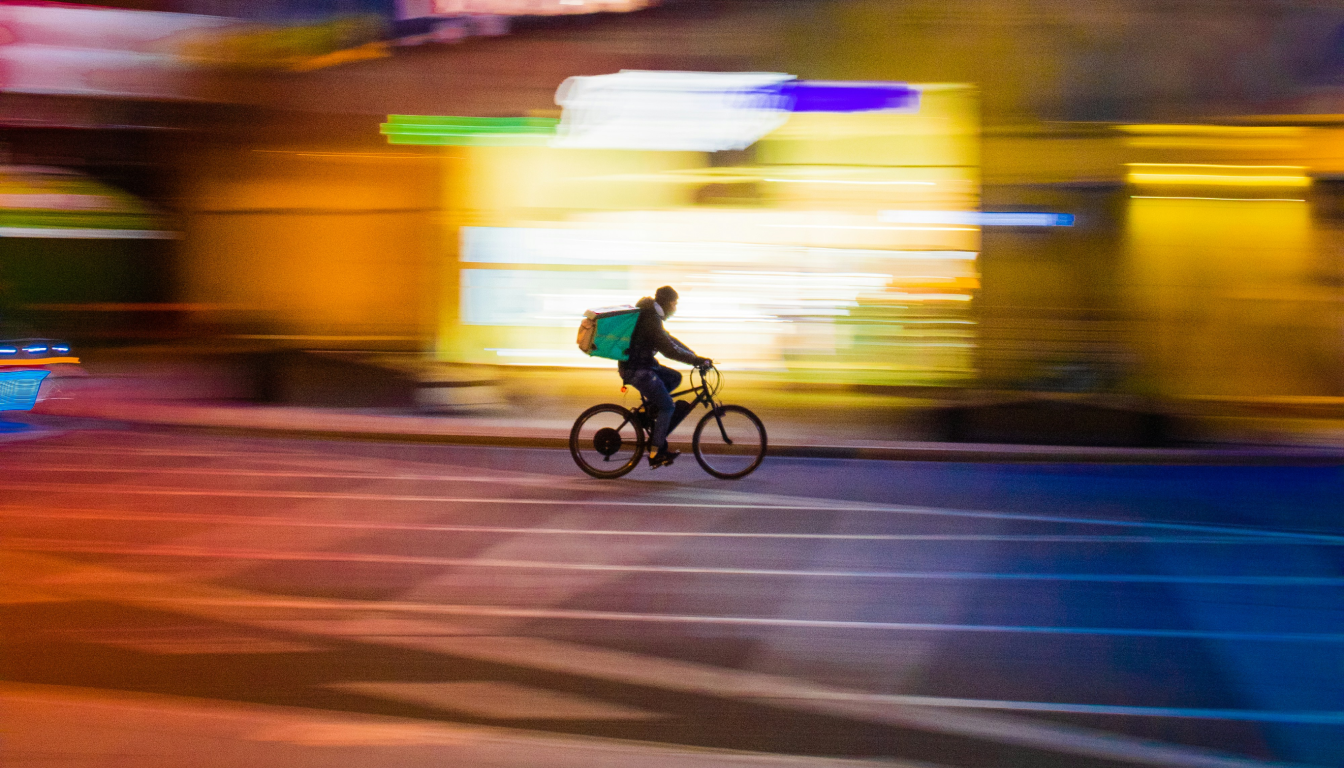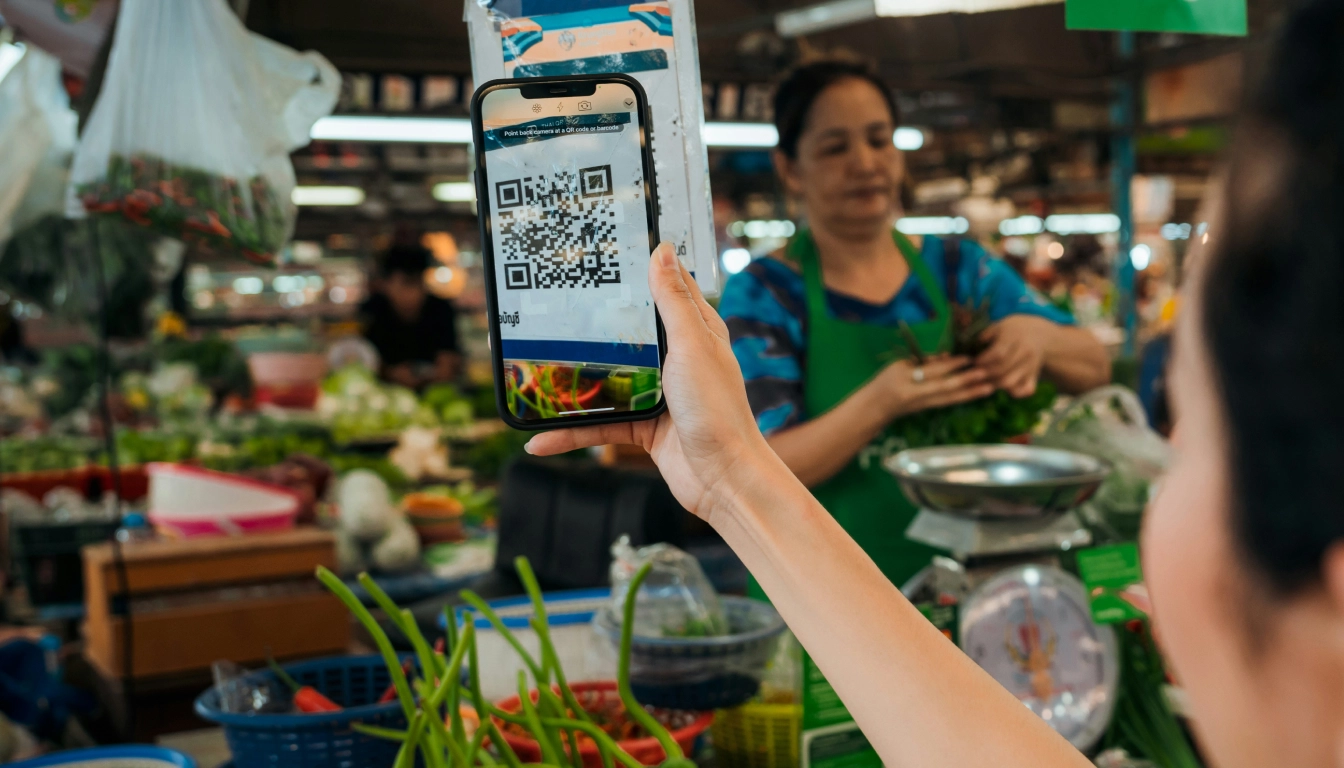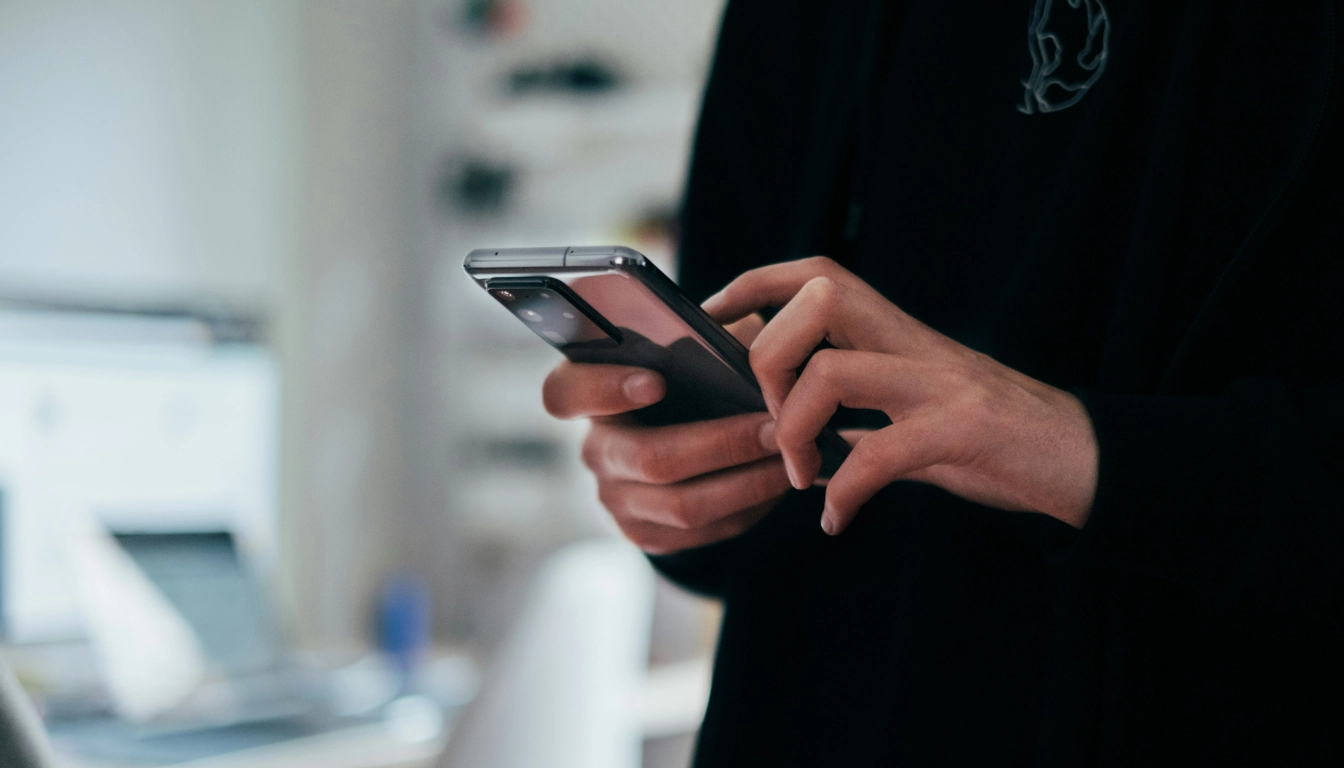How to Make a Food Delivery App: A Comprehensive Cost Analysis
 20 February 2024
20 February 2024? Listen to the Summary of this article in Audio
With the zeitgeist of efficiency and convenience dominating the modern consumer market, the allure of a tap to summon flavors from around the world to one’s doorstep is undeniable. This promises a lucrative future for enterprising business minds contemplating how to make a food delivery app. The path to digitizing dining experiences lies not just in understanding the menu of services but also the garnishing of smart economics. Thus, the dive into the food delivery app development cost becomes essential. As projections paint a future where this industry balloons to U.S dollars 1.45 trillion by 2027, grasping the app development cost estimate becomes as crucial as the culinary selection itself.
Whether one is fine-tuning existing platforms like Yo!Yumm or whisking up a bespoke Custom App, an appreciation for digital finesse and operational thriftiness is vital for survival in the food delivery milieu. In this digital renaissance of the food service sector, embarking on an expedition to develop a mobile app can be the key to unlocking realms of untapped potential — as long as one knows the ingredients for success and the price of each spice.
Key Takeaways
- Understanding the motivations behind creating a food delivery app is key to leveraging the booming industry growth.
- A food delivery app facilitates reduced operational costs with automated features and real-time customer updates.
- Keeping abreast of current food delivery app development costs is essential for effective budgeting and financial planning.
- Being armed with knowledge on the cost to develop a mobile app helps in making informed decisions for aspiring app entrepreneurs.
- The development journey commences with analyzing the need for such apps, propelled by the increase in mobile phone adoption and a demand for online convenience.
Introduction: The Rise of Food Delivery Apps
The advent of online food delivery platforms like Grubhub, Deliveroo, and Uber Eats has spurred a monumental shift from the conventional doorstep delivery practices to a high-tech, integrated digital experience. The proliferation of these platforms has raised pivotal questions pertinent to market analysts and entrepreneurs alike: how many food delivery companies are there, and more crucially, are food delivery apps profitable? As the food delivery sector burgeons into a dynamic marketplace, it becomes rife with both opportunities for market entry and competition.
Statistics reflect a marketplace teeming with options, suggesting the presence of several food delivery companies who not only share the market but also intensify the race for innovation and customer satisfaction. A deep dive into the question of profitability reveals a positive trend. Food delivery apps have found a multitude of revenue streams, including but not limited to delivery fees, restaurant commissions, and in-app advertising. This variegated business model allows for vibrant growth prospects and promises substantial returns for those ready to invest in the digital dining revolution.
“As dining tables become extensions of the digital marketplace, the food delivery industry sets a new paradigm for consumer convenience and business agility.”
The impact of these platforms on consumer behavior and traditional food service models cannot be overstated – they have effectively streamlined order placement, broadened customer reach for restaurants, and offered a customizable array of choices to the consumer. Refined through user feedback and driven by technological advancements, these apps are continually enhancing their capability to serve as effective conduits between patrons and kitchens across the globe.
- The abundant number of food delivery companies signifies a growing market teeming with potential.
- Profit margins from food delivery apps are bolstered by multi-channel revenue generation strategies.
- A competitive edge in the market is often secured by the introduction of innovative features and exceptional user experience.
To address the pressing inquiries regarding the sheer scale of the market and the lucrativeness of food delivery applications, one must consider the current landscape through a pragmatic lens. The market’s trajectory toward expansion suggests that not only is there room for newcomers, but there is also a sustained appetite for the convenience that these digital platforms bring to the proverbial table.
Consult with our team of experts to develop a cutting-edge food delivery app tailored to your business needs and budget.
Understanding the Food Delivery App Market
The burgeoning food delivery app market has emerged as an economic powerhouse, captivating the interests of entrepreneurs and established businesses alike. As the sector evolves, it wrestles with inquiries about market saturation and profitability. This critical examination aims to unfold the layers of complexity within this dynamic industry, scrutinizing the vast number of players and deciphering the financial viability that underpins their operations.

How Many Food Delivery Companies Are There
The digital marketplace is currently a mosaic of food delivery enterprises, each vying for a piece of the pie. The proliferation is due in part to the ease of access to over 1.6 billion users globally who have embraced the convenience of ordering food with just a few taps on their devices. This digital dining diaspora includes high-profile names such as Grubhub, Deliveroo, and Uber Eats, alongside a throng of local and regional apps that collectively define a booming industry.
Are Food Delivery Apps Profitable
A deep dive into the food delivery app development cost and subsequent revenue generation illustrates a multi-faceted monetization landscape. Signature to the industry are income sources that include commissions levied on restaurants, strategic on-site promotions, subscription offerings, third-party advertisements, and direct delivery fees. This diversity enables apps to carve out a lucrative space in a market that shows no signs of slowing consumption, thereby endorsing the food delivery app price comparison as a cornerstone for competitive advantage.
“Exploring the multifarious food delivery app market reveals an array of revenue channels that promise profitability for those ready to partake in the feast of digital convenience.”
Key Features of a Successful Food Delivery App
In an industry that’s rapidly advancing with technology, knowing the pivotal features that constitute the foundation of a successful food delivery app becomes essential. Entrepreneurs and businesses contemplating how to develop a delivery app must focus on providing customers with an engaging, seamless experience that blends practical functionality with technological finesse. Let’s carve out the essential features that will help your food delivery app stand out in a crowded marketplace.
User Interface and Experience
An intuitive user interface (UI) and a positive user experience (UX) are the hallmarks of any leading app. A well-designed UI meets the eye’s approval, while a seamless UX ensures that users can navigate through the app with minimal effort. In the context of mobile app development cost breakdown, allocating resources towards creating an aesthetic and user-friendly interface can significantly influence the widespread adoption and success of your delivery app.
Order Placement and Management System
An efficient order placement and management system ensures that from the moment a customer places an order to the point of delivery, the process is smooth and hassle-free. Features such as order customization, order history, and real-time updates are critical components that need to work flawlessly to enhance customer satisfaction and keep the operational aspects in check.
Payment Gateway Integration
Secure payment gateway integration is non-negotiable. Clients expect a variety of payment options – from credit cards to e-wallets – that are not only robust in deflecting security threats but are also seamless in transaction processing. An app loses its competitive edge without a secure and versatile payment system — a factor that can influence the delivery app development cost significantly.
Real-Time GPS Tracking for Deliveries
In a timeframe where instant gratification is the norm, real-time GPS tracking for deliveries is a much-desired feature. It allows customers to track their orders and fosters a transparent delivery process. This not only enhances customer trust but can also streamline the delivery process, reducing wait times and improving operational efficiency.

Ratings and Review System
A comprehensive ratings and review system serves as feedback for continuous improvement and trust-building. By providing customers with the power to rate and review their orders, you open a channel of communication and provide insights into the user’s needs and expectations — a critical aspect of the food delivery app development cost.
Each of these features, intrinsic to the app’s fabric, dictates not just the user engagement but also the developmental pathways that shape the app development cost estimate. As such, these features must be carefully curated to address the user’s demands and provide a competitive edge in the bustling domain of food delivery services.
The Development Process: How to Make a Food Delivery App
The journey of creating a successful food delivery app is multi-faceted, integrating a blend of strategic ideation, functionalities that impress and retain users, and a price point that ensures sustainability and growth. If one ponders how much does it cost to make a delivery app, it’s imperative to note that the expenses involved pivot on myriad decisions made throughout the development lifecycle. Here we decode the recipe for fabricating an app that not only satisfies the craving for convenience but also excels in the art of seamless delivery services.
Ideation and Market Research
Everything starts with an idea, one that should fill a gap in the growing food delivery landscape. Extensive market research helps in identifying key user demands, market trends, competitor features, and potential market niches. Understanding the users’ palate and the financial feasibility at this stage sets the foundation for a profitable business model and compelling value proposition.
Choosing the Right Development Team
The caliber of your development team can make or break your project. A blend of skilled professionals from UI/UX designers to full-stack developers is crucial. Their expertise must align with the latest technologies and industry standards to ensure they can perfectly cook up a food delivery app tailored to market needs.
Designing the User Experience
An exquisite user experience design translates to an interactive layout and intuitive navigation, drastically influencing user retention rates. The design phase must prioritize the user journey, considering every tap and swipe, ensuring that the app’s look and feel align with user expectations and preferences.
Backend Development
Robust backend development is the spine of the app, handling the database, server interactions, and app logic. This phase involves architecting a scalable, secure, and efficient backend that can handle multiple requests, process payments, and provide real-time updates — aspects imperative in making a food delivery app.
Testing and Quality Assurance
Thorough testing and quality assurance phases are essential for crafting an app without hitches. This not merely eliminates bugs but also polishes performance, ensuring the app withstands high traffic loads, secures sensitive data, and delivers a sublime user experience.

Launch and Continuous Improvement
The launch of your food delivery app marks the beginning, not the end. A strategic roll-out must be followed by an unwavering commitment to refinement based on user feedback and evolving market demands. Continuous improvements and feature enhancements keep the app responsive, competitive, and at the forefront of innovation.
Understanding how to make a food delivery app entails cognizance of not just technical development but also a grasp of the constantly shifting sands of user expectations and market dynamics. This exploration through stages of ideation to post-launch underscores that the cost to create such an app is not just financial but also demands investment in research, quality, and long-term user engagement.
Mobile App Development Cost Breakdown
As the digital marketplace continues to evolve at lightning speed, business visionaries need to understand the financial landscape of bringing their food delivery concept to virtual life. Knowing the intricate details of the app development cost estimate, from the very sketch of a design to the app’s launch and beyond, is critical for entrepreneurs aiming to make a mark in the delivery app domain. It is a multifaceted journey characterized by design choices, feature integrations, and constant iterations that all weigh in on the cost to develop a mobile app.
App Design Costs
The inception of any app begins with its design — a crucial phase that dictates both initial impressions and long-term user engagement. The cost of app design can be a drop in the ocean or a significant wave of the budget, with prices typically starting around $12,000 and soaring to $25,000 or even higher. This range is influenced by the app’s complexity, interface intricacies, and overall user experience ambitions.
Development Stages and Cost Ranges
Following a striking design, the development phase takes the reins, translating vision into digital reality. Developers must navigate through various stages including prototyping, feature integration, and backend systems setup, each carrying its cost implications:
| Development Stage | Basic Features | Advanced Features |
|---|---|---|
| Prototyping | $1,000 – $5,000 | $5,000 – $10,000 |
| Front-end Development | $8,000 – $16,000 | $16,000 – $30,000 |
| Back-end Development | $10,000 – $20,000 | $20,000 – $40,000 |
| Testing & Debugging | $5,000 – $10,000 | $10,000 – $20,000 |
From the early blueprint to a working prototype and the intricate stitching of front and back-end development, your app starts taking shape. This journey might necessitate anywhere from $40,000 for a simpler build, nudging up towards $100,000 or more for a platform festooned with bells and whistles.
Maintenance and Update Cost Ranges
The launch of your app doesn’t signal a full stop but a comma, with maintenance and updates ensuring longevity. Post-deployment support could involve minor bug fixes, performance optimization or potentially introducing cutting-edge features to keep up with market trends and user demands. Here’s an outline of potential maintenance and updating costs:
- Average maintenance costs: 15-20% of the original development cost per annum
- Minor updates: $1,000 – $5,000 each
- Major upgrades: $10,000 – $50,000+ depending on scope
It becomes clear, plotting the trajectory of a food delivery app’s journey from conception to continuous improvement, that the investment is not merely a momentary affair but a sustained financial engagement.
Our development team can build you a custom food delivery app to help you stake your space in this rapidly expanding industry.
Factors Affecting the Cost to Develop a Mobile App
Embarking on the development journey of a mobile app, particularly in the realm of food delivery, involves various factors that sway the overall food delivery app development cost. While entrepreneurs are often keen to discover how much does it cost to make a delivery app, the answer isn’t set in stone. It morphs with each decision and requirement, from platform selection to compliance with regulations. Here are several critical factors that carve the monetary path to launching a food delivery application.

Platform Choice (iOS vs Android vs Cross-Platform)
The initial decision regarding which platform(s) your food delivery app will call home substantially impacts development costs. iOS and Android, the titans of the mobile OS arena, each have their distinct programming languages and development environments. Choosing between these platforms or opting for a cross-platform solution that accommodates both with a single codebase will steer the budget in different directions. While cross-platform may offer initial savings, each has trade-offs in performance and user experience that must be considered.
App Complexity and Custom Features
The intricacy of your app and the uniqueness of features it offers directly inflate the complexity — and therefore, the expense. Custom features such as live order tracking, AI-powered recommendation systems, or blockchain for secure transactions, demand a higher developmental investment. The interplay of dynamic features and a seamless user interface can make the leap from a basic app to a sophisticated and engaging platform all the more costly.
Third-Party Integrations and Services
Incorporating third-party services such as payment gateways, map functionalities, or analytics can significantly influence your app’s final sticker price. While these integrations are often crucial for a competitive and feature-rich app, they entail additional costs, be it through subscriptions, usage fees, or extra development time to implement and maintain.
Compliance with Regulations
The adherence to regulatory standards imparts another layer of complexity in the app development process. Compliance with data protection laws like GDPR, HIPAA, or industry-specific regulations compels additional security measures, potentially complex data handling needs, and steady legal oversight — all of which can escalate development expenses.
Understanding these factors offers insight into the nebulous arena of app development costs. As we peel back the layers of what it takes to create a food delivery app, we begin to appreciate the nuances that shape the roadmap from concept to real-world solution.
Food Delivery App Development Cost
When venturing into the world of online food delivery, entrepreneurs invariably ask: what is the average cost to develop an app? Understanding the financial commitment involved in crafting a food delivery app is essential to the planning and success of such a venture. These platforms are costly because they require a robust architecture to handle myriad transactions, a user-friendly interface, and advanced features to stand out in a competitive market. Let’s dissect the typical costs associated with bringing a food delivery app from concept to launch.
Basic App Development Cost Estimate
For those taking their first step towards a digital food concierge service, the development cost for a basic food delivery app ranges from $40,000 to $60,000. An app at this level provides fundamental functionality needed for operation, including user registration, basic search filters, order placement, and payment processing. It’s a starting point for businesses aiming to establish their presence in the online food delivery sector.
Advanced Features and Their Impact on Cost
In the quest to captivate a more discerning clientele or offer a more sophisticated service, incorporating advanced features becomes pivotal. Features like AI recommendations, advanced analytics, real-time GPS tracking, and integrated loyalty programs could push the developmental price upwards of $150,000. This spectrum reflects the breadth of complexity and sophisticated technology required to meet the high performance and security standards demanded by today’s users.
Why Are Food Delivery Apps So Expensive
The sticker shock often associated with developing food delivery apps comes from the necessity for high-quality, reliable, and scalable solutions. A successful app must offer a seamless user experience, maintain data security, process payments swiftly, and provide real-time updates — a tall order that demands considerable investment in backend infrastructure, skilled developers, and ongoing support and maintenance. In essence, the reason behind the significant cost is the multifaceted nature of these dynamic applications that are expected to perform flawlessly around the clock.
By recognizing the intrinsic value brought about by these sophisticated features, businesses can better understand the reflections of these costs in their investment strategies. While the initial financial outlay may be substantial, the potential for a significant return on investment remains high in the rapidly expanding realm of food delivery services.
Delivery App Development Cost Comparison
The quest to digitize the dining experience comes with its price, literally. Aspiring entrepreneurs and established businesses looking to dive into the burgeoning world of food delivery apps are often faced with the pivotal question – what costs can be anticipated during the development phase? A meticulous analysis is instrumental in discerning the financial feasibility of such an endeavor as it greatly varies based on multiple facets, including app complexity and requisite features. This section aims to shed light on the nuances of delivery app development costs, providing a panoramic view of the expenses one should prepare for.
Food Delivery App Price Comparison
In the landscape of food delivery apps, a clear-cut food delivery app price comparison elucidates the substantial investment required to bring a capable app to market. For the burgeoning entrepreneur, understanding this cost breakdown is a stepping stone towards making an informed decision and crafting a competitive app that resonates with a tech-savvy audience.
What Is the Average Cost to Develop an App
The average cost to develop a food delivery app can fluctuate vastly. For a basic rendition of a food delivery service app, early estimates begin at the threshold of $40,000. However, when aiming to stir up industry giants with more sophisticated features, the upper limit can swell to an excess of $300,000. Each app is unique, with its components such as user interface, real-time tracking, payment integrations, and other pivotal features explicitly tailored to enhance user engagement and operational efficiency.
How Much Does It Cost to Make a Delivery App Compared to Other Types of Apps
When juxtaposed against other app genres, the delivery app development cost is often perceived as steep. This is ascribable to the composite nature of food delivery apps which necessitate the orchestration of multiple stakeholders – an intricate network comprised of customers, restaurants, and delivery personnel. Such complexity requires a robust and agile framework to ensure smooth operations, security, ease of use, and reliable real-time capabilities, all of which cumulatively contribute to a heftier price tag compared to less complex app types.
| App Type | Average Development Cost (Basic) | Average Development Cost (Advanced) |
|---|---|---|
| Food Delivery App | $40,000 | $300,000+ |
| Utility App | $10,000 | $70,000 |
| E-commerce App | $20,000 | $150,000 |
| Social Media App | $25,000 | $200,000 |
As reflected in the table above, the multiplex nature of food delivery apps hikes the development cost, distinguishing it from other app categories with fewer stakeholders and simpler operational demands. The investment in a delivery app ought to be viewed as a venture with multifaceted returns, not only in monetary gain but also in establishing a tenable presence in the competitive digital marketplace.
Speak to our experts to get a clear breakdown of costs for your custom food delivery app.
How to Reduce the Cost of Developing a Food Delivery App
Navigating the path of mobile app creation can be a feat akin to haute cuisine — every ingredient must be measured precisely to manage costs without compromising the app’s attractiveness and functionality. In the quest to bring culinary delights to doorsteps digitally, optimizing the expenditure on the food delivery app development process is imperative. Discerning the most cost-effective strategies is crucial for entrepreneurs who are seeking the most advantageous app development cost estimate for their food delivery platform.
Within the competitive market of mobile applications, where the cost to develop a mobile app can soar, implementing actionable strategies can significantly trim the financial blueprint. This section lays out the essential components to consider when constraining a budget and making cost-effective decisions.

Choosing the Right Development Approach
Selecting the proper roadmap at the outset can ensure the journey toward an economically viable food delivery app does not go awry. A tailored approach can mitigate excessive costs and align with the business’s long-term objectives. Hybrid and cross-platform development can present cost savings, leveraging single-source codebases to deploy across multiple operating systems, while native development offers unparalleled performance at a higher investment threshold.
Prioritizing Features for Minimum Viable Product (MVP)
In the culinary world of app development, an MVP is the taste test that determines the market’s appetite for your product. Launching with a lean selection of core features that satisfy the basic functions can significantly reduce initial costs. By analyzing customer feedback, further ingredients in the form of features can be gradually introduced to enhance the app, making the process a manageable and economically sensible endeavor.
Outsourcing vs. In-House Development
The decision between cultivating an in-house team or outsourcing the project to seasoned experts can have a sizeable impact on the cost to develop a mobile app. Outsourcing can offer financial flexibility and access to a global talent pool, potentially lowering overhead costs. In contrast, in-house development provides greater control and real-time collaboration, albeit with a potentially higher price tag when considering salaries, benefits, and workspace requirements.
Finding equilibrium in the fiscal strategy of developing a food delivery app is parallel to crafting a well-balanced dish. It requires thoughtful consideration of the quality, cost, and delivery mechanisms. Through a balanced mix of strategy and economic prudence, the creation of a food delivery app can be an attainable goal for prudent entrepreneurs.
Final Thoughts: Investing in a Food Delivery App
As we reflect upon the bounty of insights and figures patterned across the expansive tapestry of the food delivery app market, the potential for a substantial return looms as large as the undertaking itself. For those deciphering how to make a food delivery app, the path is punctuated with both promise and prudence. The evolution of consumer habits toward the convenience of digital dining all but solidifies the notion that food delivery platforms are not just a trend, but a transforming force within the food industry.
Yet, the endeavor to understand how to develop a delivery app is less a sprint and more a marathon — a long-term investment that demands strategic planning, a thorough cost-benefit analysis, and an ongoing commitment to aligning with market trends. The feasibility of forging ahead in this digital domain hinges on an entrepreneur’s capacity to harness technological innovations and consumer insights, developing a tabletop gateway that satisfies a modern diner’s palate.
Return on Investment Analysis
Before the first digital order is ever placed, a rigorous examination of potential returns is paramount for those eager to capitalize on the growing appetite for app-mediated food delivery. The ingredients beyond the plate — user experience, platform reliability, and market penetration — all play a significant role in whether these platforms may ultimately answer the pivotal query, are food delivery apps profitable? As the market shares its bounty, those who skillfully manage the balance sheets alongside the order sheets can expect their prudent investments to mature richly.
The Future of Food Delivery Apps in the Market
As we gaze into the future, the presence of food delivery apps within the market is predicted not only to endure but to burgeon in its influence and integration. The digital revolution in dining is poised to continue its course, propelled by the dual engines of innovation and efficiency. A crystal ball is unnecessary to foresee the intertwining of food delivery apps within the fabric of daily life even more intricately, emerging as an indispensable utensil in the cutlery drawer of urban living. In such a dynamic environment, measured investment and enduring adaptability are the recipes for culinary and commercial success in the world of food delivery apps.
Our team can guide you through every step of designing, developing, and launching a successful food delivery app.
FAQ
How can I make a food delivery app?
To make a food delivery app, begin with market research and ideation, define the app’s value proposition, choose an expert development team, design a user-friendly interface, develop a robust backend, and implement features like GPS tracking and secure payment gateways. Finally, conduct thorough testing and plan for continuous improvements post-launch.
What factors affect the cost of mobile app development?
The cost to develop a mobile app is influenced by several factors, including the choice of platform (iOS, Android, or cross-platform), app complexity and custom features, third-party integrations and services, and compliance with various regulations.
Are food delivery apps profitable?
Yes, food delivery apps have the potential to be profitable through monetization models like restaurant commissions, subscription fees, on-site promotions, third-party ads, and delivery charges. Their profitability depends on market penetration, user base size, and operational efficiency.
Why are food delivery apps so expensive to develop?
Food delivery apps are expensive to develop due to their complex nature that includes multiple stakeholders, the need for real-time tracking, secure payment processing, and high-quality user interface design. The integration of advanced features and maintaining a secure platform also contribute to higher development costs.
What is the estimated cost for developing a basic food delivery app?
The estimated cost for developing a basic food delivery app ranges from ,000 to ,000, depending on the included features, platform choice, and geographical location of the development team.
How can I reduce the cost of developing a food delivery app?
To reduce development costs, consider a phased approach with a Minimum Viable Product (MVP), prioritize essential features, choose cost-effective frameworks and technologies, and potentially outsource development to a region with lower labor costs.
What are the key features of a successful food delivery app?
A successful food delivery app should have a user-friendly interface and experience, an efficient order management system, secure payment integration, real-time GPS tracking for deliveries, and a comprehensive rating and review system to ensure user engagement and operational excellence.
What does the development process of a food delivery app involve?
The development process involves ideation, market research, setting a clear scope, selecting a development team, designing the user experience, backend development, multiple stages of testing, quality assurance, and a strategic launch, followed by ongoing maintenance and updates based on user feedback.
How many food delivery companies are there?
There are hundreds of food delivery companies operating globally, with major players like Grubhub, Deliveroo, and Uber Eats leading the market. The exact number continuously changes as new startups enter the space and consolidation occurs within the industry.
How does the price for developing a food delivery app compare to other types of mobile apps?
The price for developing a food delivery app is generally higher compared to many other types of mobile apps due to the complexity of features required to serve multiple users, including customers, restaurants, and delivery personnel, as well as the need for high security and performance standards.










